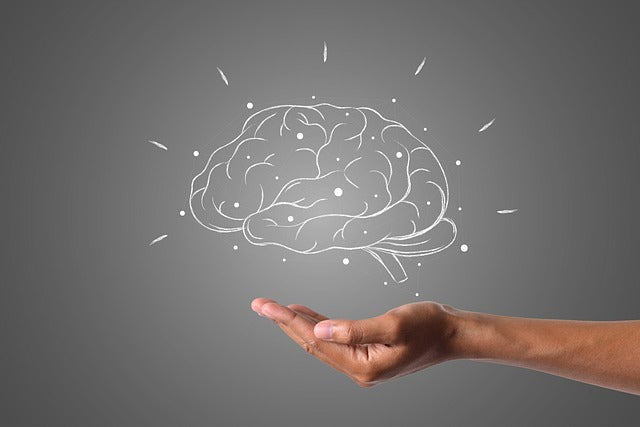Learn How Heavy Metals Play a Role
April brings the bliss of warm days, blue skies, emerald trees and apple blossoms. It also ushers in autism awareness month—that time of the year when we turn our attention to the growing epidemic of neurodevelopmental disabilities striking children across America.
Autism rates are rising. One in every forty-one U.S. children—2.41 percent—are afflicted with autism spectrum disorder, according to new data from the U.S. National Institutes of Health (NIH). "The prevalence of autism spectrum disorder is much higher than previously thought," Dr. Wei Bao, lead author of the new study, told CBS News. That's up from 1 in 68 in 2010. But Bao said in the 1970's, only 1 in 1000 children suffered from autism.
Boys are three times more likely to have autism than girls, although now researchers believe that girls' rates are underestimated because the disorder manifests differently in females, and because girls may be more adept at hiding autism. Girls may in fact be suffering in silence. One Australian study of 50 girls from the Bond University Center for Autism Spectrum Disorder in Brisbane, Australia, found that the girls were teased, bullied, often highly anxious, and could develop eating disorders or self-injurious behavior.
Whatever the final count, each child suffering from autism can cost up to $2.4 million over a lifetime, according to a landmark study by the organization Autism Speaks.
Though every child with autism is unique, autism spectrum disorders (ASD) can lead to difficulties with social interaction and communication, anxiety and rage, a tendency to engage in repetitive behaviors (such as rocking, spinning, finger play or fluttering the hands), problems with coordination or balance, an increased need for order, obsessive and narrow preoccupations, and many other symptoms. Some children with autism are nonverbal. Though autism is a neurodevelopmental disorder, one that essentially impacts brain function, it is also associated with many other health issues including poor sleep, digestive distress, bipolar disorder, depression, anxiety, and attention deficit and hyperactivity disorder (ADHD).
This suggests that autism is a body-wide phenomenon affecting the entire immune and nervous systems. In fact, specific immune abnormalities have been found in 30 to 70 percent of autistic children, according to Jane El Dahr, M.D., is the Chief of Pediatric Allergy, Immunology, and Rheumatology at Tulane University Health Sciences Center. Inflammation may be impacting the entire body, including the brain; and some researchers contend that by reducing brain inflammation, the destructive effects of chronic inflammation on the nervous system can be reduced, allowing for improvement in autism.[1]
The Link Between Heavy Metals and Autism
Nobody knows for sure why autism is on the rise, but one good guess supported by abundant research is the increasing toxicity of the modern world. There are over 80,000 chemicals registered for use in the U.S. and every year 2000 more are added—so many that if the Environmental Protection Agency were to test them all it would take centuries. Every day we encounter environmental toxins such as particulates from pollution; heavy metals, pesticides, and herbicides in food and water, endocrine disrupters from plastics and other modern chemicals. Chemicals are abundant in everyday items such as computers, smartphones, furniture, cosmetics, cleaners, toys, carpet and more.
Heavy metals appear to play a role in autism spectrum disorders (ASD). One recent study found that mothers of children with ASD have more mercury dental amalgam restorations than mothers of healthy children not suffering from the disorder, suggesting exposure to mercury during pregnancy and possibly breastfeeding.[2] Other studies have correlated mercury toxicity with autism as well.[3] A 2015 study of 100 children with autism and 100 healthy children not suffering from the disorder, found significantly higher levels of mercury, lead and aluminum in the children with autism group.[4] The researchers concluded that "environmental exposure to these toxic metals at key times in development may play a causal role in autism."
In order to determine whether heavy metals are playing a role in symptoms, a whole blood elemental metals analysis is useful and safe. Not only can such tests measure levels of toxic metals along with beneficial nutrients (such as zinc or magnesium), it can measure imbalanced mineral pairs. Such a screen can indicate elevated exposure to toxic metals or imbalances of nutrient metals in whole blood.
The Irreplaceable Role of Glutathione
Our ability to excrete mercury and other toxic metals is dependent on the presence of abundant glutathione, our most important endogenous antioxidant. Glutathione is essential to detoxification, quenching free-radicals, helping modulate immune function, and removing mercury safely from the cell. Glutathione binds to mercury and allows it to be safely carried out of the body into the bile.[5] Biliary secretion of mercury is in large part dependent on the presence and transport of glutathione in the bile.[6] [7]
The severity of autism has indeed been correlated with toxic metals and low glutathione, particularly red blood cell glutathione levels.[8]
Typical oral supplementation of glutathione, however, has low bioavailability while liposomal formulations protect glutathione from being broken down by digestive acids and enzymes, allowing it to be taken up into the cells where it is needed.
Can Chelation Therapy Help Autism?
Numerous studies have documented actual improvements in symptoms of autism after chelation therapy for heavy metals. The word chelation comes from the Greek word chele that means claw of a lobster, thus depicting the concept of holding with a strong grip; molecules that chelate 'claw' metals loose from the cells, and hold onto them. In one study, after six months of chelation therapy, verbal and nonverbal communication of ASD children improved, as did ability to adapt to change and relate to other people.[9] Another impressive study documented significant improvements in autism symptoms after a mere six months of oral chelation therapy.[10]
However, there is a hidden dark side to typical oral and intravenous chelation therapy: toxins such as methylmercury, cadmium, arsenic, can be reabsorbed after excretion into the bile. This reabsorption and redistribution can put stress on the organs of detoxification, such as the liver and kidney, and further damage a delicate system already under stress.
Intestinal Metal Detox for Autism?
Thiolated resins are unique substances with metal-binding groups that tightly bind metals like mercury, and were first used in the 1970s to address a mass methylmercury poisoning incident in Iraq. Grain treated with a methylmercury fungicide that was never meant for human consumption was imported into Iraq as seed grain.[11] Tragically, the poison grain was eating by rural Iraqis, and thousands died while many more were left disabled. It was found that thiolated resins could significantly reduce the half-life of the methylmercury, improving some of the devastating symptoms.[12],[13],[14]Today, thiol-functionalized silica can safely intercept mercury and other metals in the gut, binding them tightly while avoiding redistribution and subsequent toxicity to the liver and kidneys. Because this type of binder acts locally in the gastrointestinal tract, it can allow metals to safely drain at a natural rate.
Though autism spectrum disorders can be challenging and difficult, the good news is that there are many approaches to improving symptoms. In fact, as children grow into adults, autism naturally tends to improve. Autistic children can grow into inspiring and remarkable adults with unique gifts. One such person is Temple Grandin, who holds a PhD in animal science, teaches at Colorado State University, runs her own business, and gives talks around the world. First immortalized in a profile for The New Yorker Magazine by the late Oliver Sacks, she described herself in her own biography, Emergence, as unable to tolerate normal contact, living in a world of excruciating and heightened sensation, subject to violent rages, still without language by age three, yet able to sit on the beach sifting sand in fascination for hours. Today, as autism awareness grows, there is increasing acceptance of human neurodiversity, and hope for families dealing with autism spectrum disorders.
You may also be interested in:
Mercury a Potent Toxin with Widespread Health Impact
The Mother of All Antioxidants




